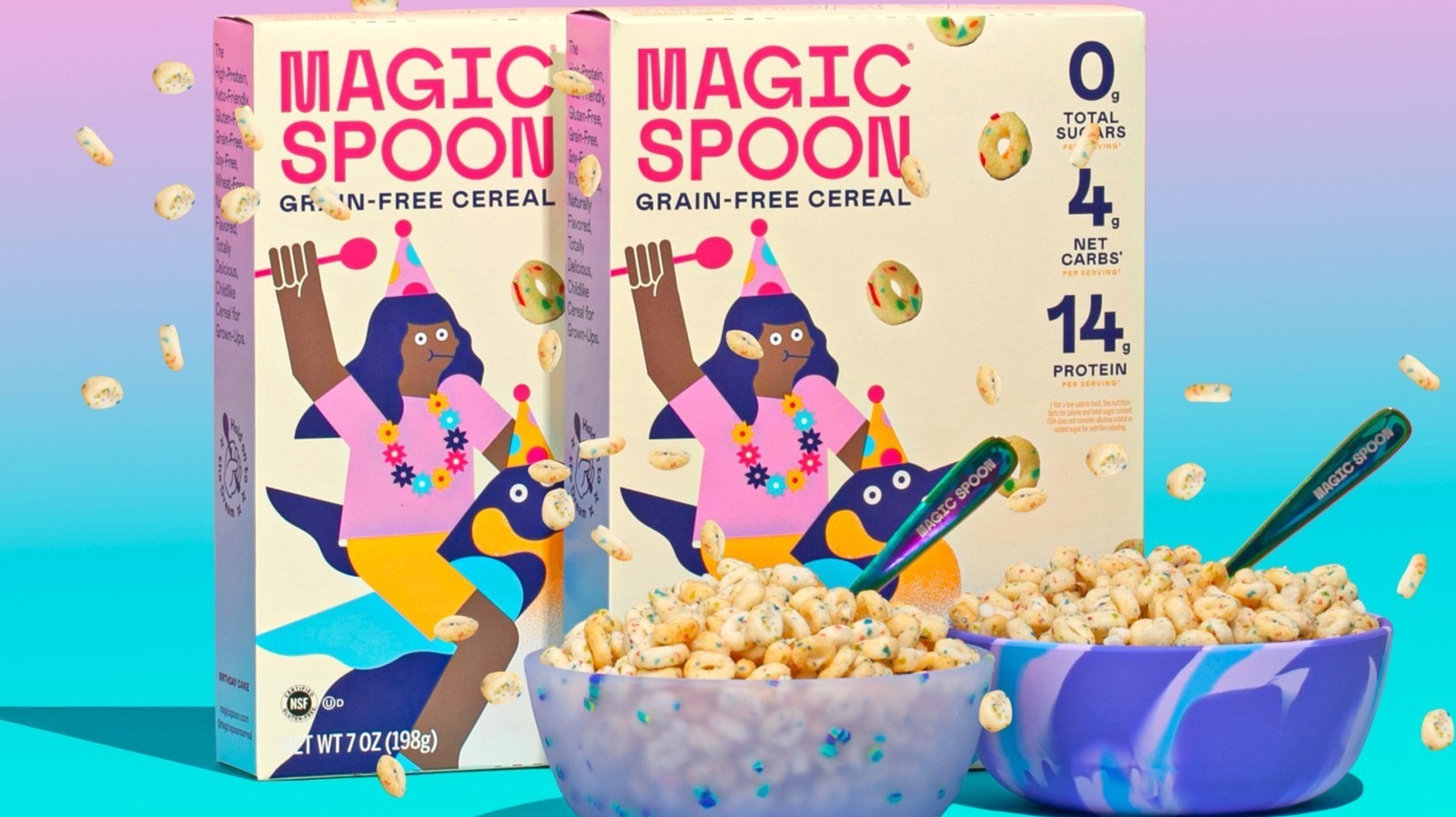[ad_1]

If you long for the flavor of your favorite childhood cereal but don’t want all the processed sugars, excess gluten, and unpronounceable additives, you may be in luck. Magic Spoon Grain-Free Cereal promises to be exactly that. From the outset, Magic Spoon claims to be high-protein, low-carb, gluten- and grain-free, with only natural flavors, but what’s of greater interest is its zero-sugar vow. Yes, “no cane sugar, corn syrup, are sugar alcohols” is the company’s solemn pledge. So how does the company sweeten the sugary-sounding offerings, including maple waffle, cocoa, or cookies and cream? The Magic Spoon website claims to use a combination of monk fruit and allulose.
Back up a second. Allulose? What on earth is allulose? Well, according to the Cleveland Clinic, it is a sweetener recently approved by the FDA that is found in “figs, raisins, wheat, maple syrup, and molasses.” Nutritionist Kristin Ciccolini told CNN, it is low on the glycemic index and doesn’t affect blood sugars. Some artificial sweeteners have scary health risks. So, what risks are associated with allulose? The Cleveland Clinic warns that if you have too much, you may experience gastrointestinal issues including gas and bloating. (This shouldn’t happen after one normal-sized bowl of cereal though. Phew.)
If you’ve ever been repulsed by the taste of other sweeteners, you’re likely leery of anything that says it’s a sugar replacement. After all, real sugar tastes pretty darn good. So, how does allulose taste?
[ad_2]

Leave a Reply